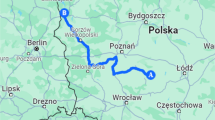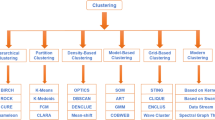Abstract
Maintenance has always been considered as an important part of both manufacturing and service systems and yet a costly practice. The purpose of this study is to analyze the efficiency of the maintenance activities in a maintenance system comprising of independent components, using the collected data in process. For this purpose, a three-stage method was followed. First, at the initial data preprocessing stage, after the data purification, new operating fields were defined. The data was integrated in a final matrix which was used as an input for the modeling phase. At this stage, using one of the clustering algorithms i.e. k-means, the maintenance data was clustered so that homogenous clusters of the components i.e. buses, were formed. Then using the Euclidean distance, the distances of the clusters from the ideal status were found and clusters were categorized and named accordingly. In the last part of the modeling stage, while having the clusters as target, Apriori algorithm was used to identify the rules (conditions) which had caused each record to be placed in each specific cluster and thereby to find a way to assess the efficiency of the maintenance system and activities. At the 3rd stage and on the basis of the extracted rules, necessary steps were proposed to eliminate the conditions which lead records to be placed in the clusters comprising records of bad conditions. The method is explained in a case study of the maintenance system of an urban transportation bus network.

Similar content being viewed by others
Notes
Mean time between failure.
References
Agrawal R, Srikant R (1994) Fast algorithms for mining association rules. 20th international conference on very large databases. Morgan Kaufmann, San Francisco, pp 487–499
Bastos P, Lopes R, Pires L, and Pedrosa T (2009) Maintenance behavior-based prediction system using data mining. Proceedings of IEEE IEEM, pp 2487–2491
Basu S, Davidson I, Wagstaff KL (2009) Constrained clustering, advances in algorithms, theory, and applications. Chapman & Hall/CRC, Boca Raton
Choudhary AK, Harding JA, Lin HK (2007) Engineering moderator to universal knowledge moderator for moderating collaborative. GLOGIFT 07. UP Technical University, Noida, pp 529–537
Choudhary AK, Harding JA, Tiwari MK (2009) Data mining in manufacturing: a review based on the kind of knowledge. J Intell Manuf 20:501–521
Dhillon BS (2006) Maintainability, maintenance, and reliability for engineers. Taylor & Francis Group, LLC
García MNM, Roma´n IR, Pen˜alvo FJG, Bonilla MT (2008) An association rule mining method for estimating the impact of project management policies on software quality, development time and effort. Expert Syst Appl 34(1):522–529
Gharbi A, Kenné JP (2005) Maintenance scheduling and production control of multi machine scheduling and production control of multi machine. Comp Ind Eng 48:693–707
Han J, Kamber M (2002) Data mining concepts and techniques. Mechanism Industry Publishing, BeiJing
Hand DJ (1981) Discrimination and classification. Wiley, New York
Hosseini SMS, Maleki A, Gholamian MR (2010) Cluster analysis using data mining approach to develop CRM methodology. Expert Syst Appl 37:5259–5264
Huang Z (1997) A fast clustering algorithm to cluster very large categorical data sets in data mining. Workshop on research issues on data mining and knowledge discovery (DMKD97)
Larose DT (2005) Discovering knowledge in data, an introduction to data mining. Wiley, Hoboken
Li J, Shen H, Topor R (2001) Mining the smallest association rule set for predictions. Proceedings of the IEEE international conference on data mining (ICDM’01)
Lindley R, Higgins PE, Mobley RK, Smith R (2002) Maintenance engineering handbook, 6th edn. McGraw-Hill Companies, Inc
Mitra S, Pal SK, Mitra P (2002) Data mining in soft computing framework: a survey. IEEE Trans Neural Netw 13(1):3–14
Mobley RK (2002) An introduction to predictive maintenance, 2nd edn. Butterworth Heinemann, Amsterdam
Neaga EI, Harding J (2001) Data mining techniques for supporting manufacturing enterprise design. International conference on industrial and production management, Quebec
Pyle D (2003) Business modeling and data mining. Morgan Kaufmann Publishers, San Francisco
Seng JL, Chen TC (2010) An analytic approach to select data mining for business decision. Expert Syst Appl 37:8042–8057
Shina HW, Sohnb SY (2004) Segmentation of stock trading customers. Expert Syst Appl 27–33
Singh L, Singh S, Dubey PK (2010) Applications of clustering algorithms and self organizing maps as data mining and business intelligence tools on real world data sets. IEEE International conference on methods and models in Computer Science
Swanson L (2001) Linking maintenance strategies to performance. Int J Prod 70:237–244
Wang Y, Wong AKC (2003) From association to classification: inference using weight of evidence. IEEE Trans Knowl Data Eng 15:764–767
Witten IH, Frank E, Hall MA (2011) Data mining, practical machine learning tools and techniques, 3rd edn. Morgan Kaufmann, Burlington
Ye Nong (2003) The handbook of data mining. Lawrence Erlbaum Associates, Inc., Mahwah
Yeo AC, Smith KA, Willis RJ, Brooks M (2001) Clustering technique for risk classification and prediction of claim costs in the automobile insurance industry. Int J Intell Syst Account Finance Manag 10:39–50
Zhu JM, Yin Y, Kaku I, Tang J (2011) Data mining, concepts, methods and applications, in management and engineering design. Springer, London
Acknowledgments
Islamic Azad University, South Tehran Branch, Tehran, Iran
Author information
Authors and Affiliations
Corresponding author
Rights and permissions
About this article
Cite this article
Maquee, A., Shojaie, A.A. & Mosaddar, D. Clustering and association rules in analyzing the efficiency of maintenance system of an urban bus network. Int J Syst Assur Eng Manag 3, 175–183 (2012). https://doi.org/10.1007/s13198-012-0121-x
Received:
Revised:
Published:
Issue Date:
DOI: https://doi.org/10.1007/s13198-012-0121-x




